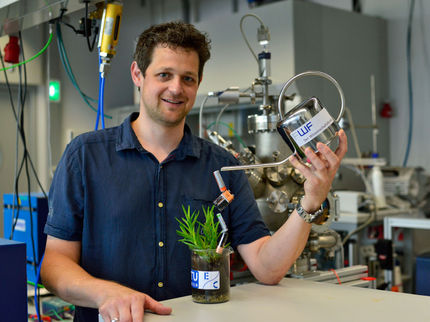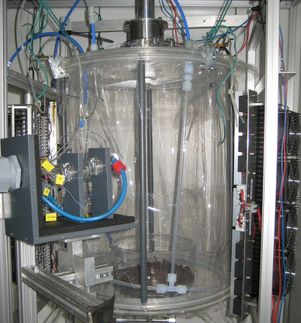Researchers develop new method to detect melamine in milk
University of Miami engineer and her collaborators are using gold nanoparticles to develop a quick, simple and efficient detection method for melamine in dairy products
University of Miami assistant professor in the College of Engineering, Na Li and her collaborators have developed a fast, economical and easy method to detect melamine in milk. Melamine is the compound found in contaminated pet food and in tainted dairy products from China in 2007 and 2008 respectively. The laced dairy products were responsible for sickening thousands of people, especially children. The situation caused recalls of Chinese dairy products all over the world.
Monitoring melamine-tainted products continues to be a worldwide concern. Melamine is an industrial substance commonly used in plastics and fertilizers. Since Melamine is high in nitrogen, when added to foods it can make the products appear higher in protein value during standard testing. However, when ingested, the chemical can cause serious health problems and in some cases death.
The new method is described in the study titled "Rapid Detection of Melamine in Whole Milk Mediated by Unmodified Gold Nanoparticles," published online by the journal Applied Physics Letters.
This study develops a facile and accurate approach towards detection of melamine utilizing gold nanoparticles and a dual color and precipitation test. The complete detection methodology is completed in less than 15 minutes.
"Current methods of melamine detection in milk are costly and time consuming," says Na Li, assistant professor in the Department of Mechanical and Aerospace Engineering, at the University of Miami and senior corresponding author of this study. "Our work represents a significant step towards the rapid detection of melamine, which addresses a critical global issue."
The researchers first step is to separate the casein-based milk component, which can interfere with melamine detection. Next, they add gold nanoparticles to the solution. The interaction between the gold nanoparticles and melamine causes a dramatic color change indicating the presence of melamine. When melamine is present, the color of the solution changes from red to blue within seconds and can be measured both by visual inspection and spectrophotometry. Cyanuric acid, which has a specific reaction with melamine, is introduced sequentially to increase specificity. If melamine is present, a precipitant is formed, which can also be assessed both visually and by spectrophotometry.
"This method provides a unique opportunity to use the highly sensitive detection properties of nanoparticles to prevent people from being harmed by melamine ingestion," says Dean Ho, assistant professor in the Departments of Biomedical and Mechanical Engineering, and at the Robert H. Lurie Comprehensive Cancer Center at Northwestern University and co-corresponding author of this study "It's important to utilize nanoparticles that can be manufactured in high yield, which makes it possible to have a method that can be widely used."
In the future, the researchers hope to develop a commercial simple kit that can be used by the layperson, at home or in the field, to detect melamine contaminant in food.
"Our method provides not only an alternative method to the current lab based detection, but also a way for early screening of milk, especially for field work and for developing countries," says Fang Wei, staff research associate in the Department of Mechanical and Aerospace Engineering, at the University of California, Los Angeles and first author of this study.
Other news from the department science
Most read news
More news from our other portals
See the theme worlds for related content
Topic world Photometry
Photometry, the measurement of light intensity in relation to interaction with molecules, is a key tool in chemistry and life sciences. It enables researchers to determine concentrations of substances in solutions, follow reaction kinetics or check the quality of samples and provides valuable data for analyses, from quality control in the laboratory to clinical diagnostics.

Topic world Photometry
Photometry, the measurement of light intensity in relation to interaction with molecules, is a key tool in chemistry and life sciences. It enables researchers to determine concentrations of substances in solutions, follow reaction kinetics or check the quality of samples and provides valuable data for analyses, from quality control in the laboratory to clinical diagnostics.





























































